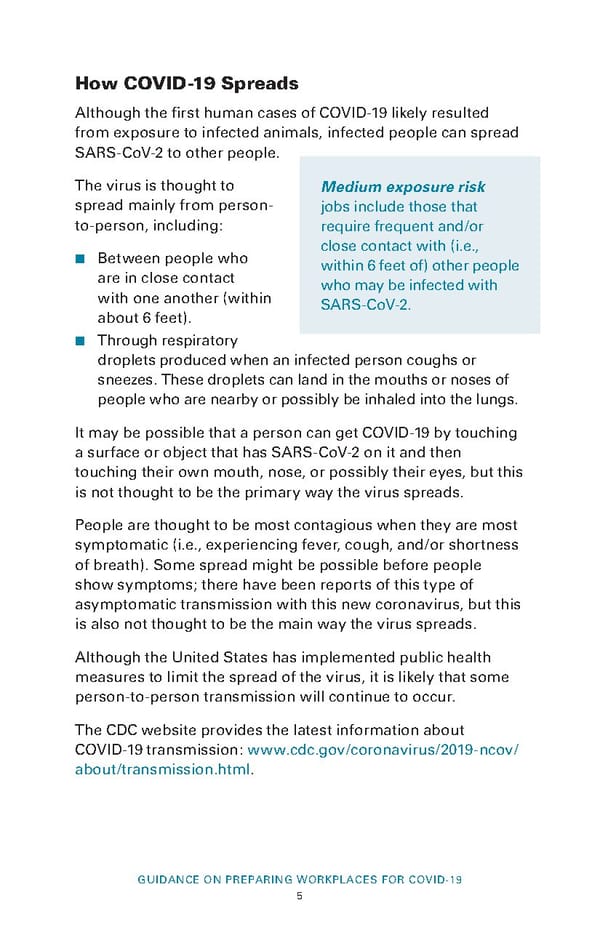How COVID-19 Spreads Although the first human cases of COVID-19 likely resulted from exposure to infected animals, infected people can spread SARS-CoV-2 to other people. The virus is thought to Medium exposure risk spread mainly from person- jobs include those that to-person, including: require frequent and/or ■ Between people who close contact with (i.e., are in close contact within 6 feet of) other people with one another (within who may be infected with about 6 feet). SARS-CoV-2. ■ Through respiratory droplets produced when an infected person coughs or sneezes. These droplets can land in the mouths or noses of people who are nearby or possibly be inhaled into the lungs. It may be possible that a person can get COVID-19 by touching a surface or object that has SARS-CoV-2 on it and then touching their own mouth, nose, or possibly their eyes, but this is not thought to be the primary way the virus spreads. People are thought to be most contagious when they are most symptomatic (i.e., experiencing fever, cough, and/or shortness of breath). Some spread might be possible before people show symptoms; there have been reports of this type of asymptomatic transmission with this new coronavirus, but this is also not thought to be the main way the virus spreads. Although the United States has implemented public health measures to limit the spread of the virus, it is likely that some person-to-person transmission will continue to occur. The CDC website provides the latest information about COVID-19 transmission: www.cdc.gov/coronavirus/2019-ncov/ about/transmission.html. GUIDANCE ON PREPARING WORKPLACES FOR COVID-19 5
 Guidance on Preparing Workplaces for COVID-19
Page 6 Page 8
Guidance on Preparing Workplaces for COVID-19
Page 6 Page 8